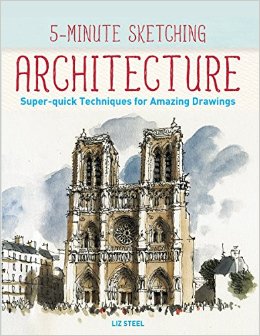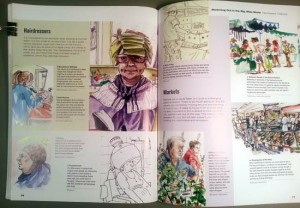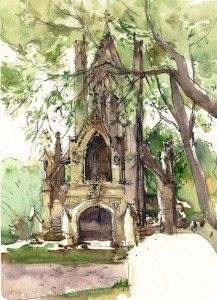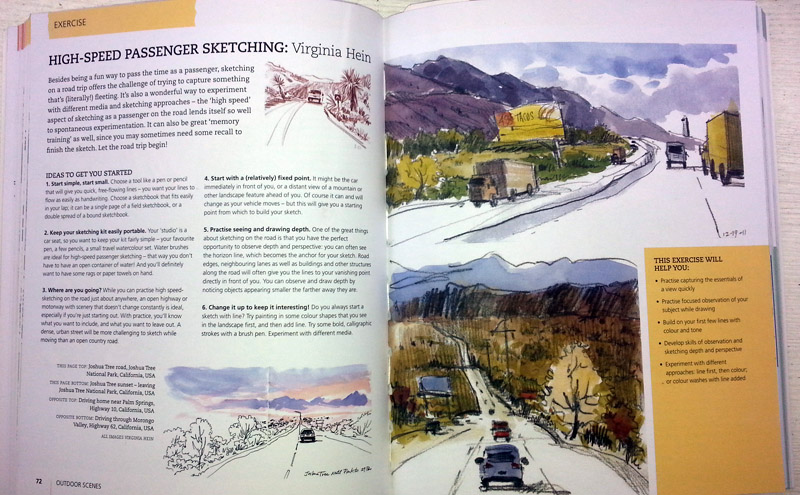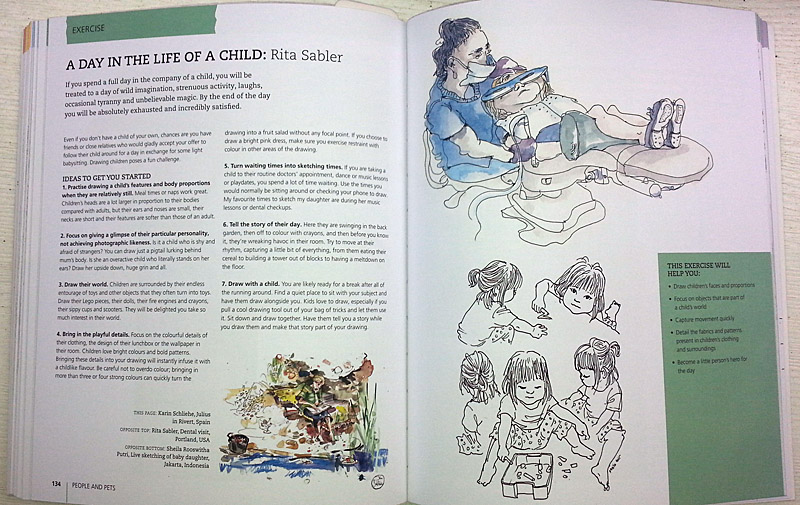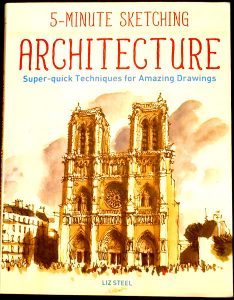 This will be a very biased review. I have followed Liz Steel’s blog and Facebook posts for several years. She’s been one of the most giving artists within our sketching world. She’s also one of the best. I’ve taken all three of Liz’s online classes and have found them truly amazing because Liz “gets it” when it comes to teaching art. She’s one of my sketching heros.
This will be a very biased review. I have followed Liz Steel’s blog and Facebook posts for several years. She’s been one of the most giving artists within our sketching world. She’s also one of the best. I’ve taken all three of Liz’s online classes and have found them truly amazing because Liz “gets it” when it comes to teaching art. She’s one of my sketching heros.
Firefly Books has just launched a new “5-Minute Sketching” series of books and Liz Steel and Pete Scully have had their books in that series launched simultaneously. They’re both winners in my book and I’ll be reviewing Pete’s book at a later date. I do want to say a couple things about the series. The content of these books is tightly organized by the publisher. Each has four chapters with identical titles, and many of the sub-section titles are identical as well, particularly in chapters three and four. It’s interesting to see how Liz and Pete have packed a wealth of knowledge into this somewhat restrictive construct, adjusting it to fit their particularly topic.
I do a lot of quick-sketching but I have to say that I feel that the notion that you can write books about “5-minute sketching” without filling them with yet another discussion of gesture drawing smacks of naivete on the part of the publisher. Even Liz, who is a very fast architectural sketcher, will spend far more than five minutes sketching any building more complex than a simple box. Lucky for us, Liz acknowledges this in her introduction and then proceeds to provide her information as though we’re trying to work quickly, but not unreasonably so.
Lastly, I confess that I’m an academic. It grates on me that brilliant artists are supposed to boil down teaching art into “tips” rather than complete discussions of the subject. For those new to the subject it’s clearly the case that many tips will generate “How do I do that?” responses from those trying to learn to draw. Of course, the flip-side of this is that these kinds of books are starting to fill the needs of people who have moved beyond basic drawing skills and who want books about how to approach subjects, how to use basic skills to solve problems, etc.
Liz’s book does exactly that. She is not teaching you how to draw buildings. She’s teaching how to sketch buildings quickly and well. She has managed to pack so much information into this book that it takes considerable effort to read and think about what is written and how it might apply to your own sketching. This is a book you’ll want to read more than once. It’s a book you’ll want to study and apply to your art.
The first chapter emphasizes how to “see” the buildings you want to draw. Liz places emphasis on seeing the volumes of the buildings, how to lay out basic structure so that the actual drawing can go much more quickly and freely. She discusses using the advantages of actually having the building in front of you to simplify your approach to perspective in what she refers to as “pointless perspective.” There’s also an interesting set of tips on using distortion to add some playfulness to your drawings.
Chapter two jumps into the actual drawing of buildings, providing insights into how to identify and simplify various aspects of buildings. She covers everything from simple houses to large historic buildings. She provides a bunch of great tips for drawing interiors, complete streetscapes, bridges and even construction sites. As mentioned above, she’s not showing you how to draw these in five minutes but her ideas will help you improve both your sketches and the speed at which you can accomplish them.
Chapter three is a fun one for me. It’s titled Time-Saving Techniques and Liz talks about approaches that allow you to capture volumes quickly, like using a minimum of lines, rapidly creating volumes with restated lines, working smaller and working with tonal values to capture volumes. There’s a lot of material in this section and trying all the techniques would require considerable time and effort but I’m looking forward to doing exactly that.
Chapter four is all about how using different materials can change your approach. The book is not materials-centric and Liz herself has worked in so many ways that it’s natural for her to talk about using pen and ink, watercolors, markers, pencils, watercolor pencils, colored pencils and in each section on each she provides information that causes me to want to try them too. She does this both to show you how these materials change your approach but also to provide insight into how to use each.
This book provides lots of ideas you’ll want to pursue. If you need more information than Liz could provide in the book, her Sketching Now web page is the entry point to three courses she provides, titled Foundations, Edges, and Buildings. In my opinion, they should be taken in that order. They are some of the best pedagogy available in online art training and I highly recommend them.
In conclusion, if you’re interested in drawing buildings on location, or just want to improve your location sketching in general, this is a book worthy of your time.





